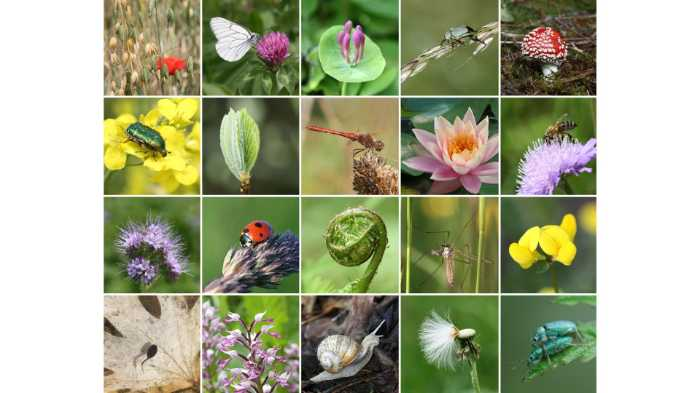
The CCB Standard is a new, voluntary certification program that helps businesses integrate climate change, community engagement, and biodiversity conservation into their land management projects. The program was developed in response to the growing demand for sustainable land management practices. It provides businesses with a framework for managing their land in a way that benefits local communities, conserves biodiversity, and reduces greenhouse gas emissions. In this blog post, we’ll take a closer look at the CCB Standards and what it means for businesses.
- What is a CCB unit?
- What are the benefits of CCB certification?
- What are the requirements for CCB certification?
- What is community biodiversity?
- What is an example of community diversity?
- What are the characteristics of a land management project?
- FAQs
What is a CCB unit?
A CCB unit is a piece of land that has been certified by the CCB Standard. The certification process includes an assessment of the land’s ecological value, its potential for carbon sequestration, and its ability to provide social and economic benefits to local communities. Once a piece of land has been certified, businesses can use it to offset their greenhouse gas emissions or to support their community engagement activities.
What are the benefits of CCB certification?
CCB certification is a voluntary program that assesses the impacts of a project on climate, community, and biodiversity. The certification process includes an independent review of the project’s plans and operations, as well as site visits to assess the project’s compliance with CCB standards. Projects that are certified by CCB have demonstrated a commitment to reducing their negative impacts on the environment and local communities.
In addition to the environmental benefits of CCB certification, certified projects also receive recognition from environmental organizations and the general public. This can lead to increased funding and support for the project, as well as improved relations with local communities. Ultimately, CCB certification provides a way for projects to show their dedication to sustainability and responsibility.
What are the requirements for CCB certification?
Projects that are seeking CCB (Climate, Community, and Biodiversity) certification must first undergo an independent assessment to ensure that they meet the standards set forth by the CCB Initiative. These standards cover a wide range of topics, including greenhouse gas emissions, biodiversity conservation, and social equity. Once a project has been assessed, it must then be registered with the CCB Registry. After registration, projects must submit an annual report detailing their progress in meeting the CCB standards. If a project is successful in meeting all of the requirements, it will be awarded CCB certification.
CCB-certified projects are designed to create a positive impact on the environment and local communities. By working to reduce greenhouse gas emissions and conserve biodiversity, CCB-certified projects help to protect the planet for future generations. In addition, by ensuring that local communities benefit from the project activities, CCB-certified projects help to create a more just and equitable world. Consequently, obtaining CCB certification is an important way for projects to demonstrate their commitment to sustainability.
What is community biodiversity?

Community biodiversity, also known as biocultural diversity, is the variety of life forms and cultures within a particular community. It includes the diversity of plant and animal species, as well as the diversity of human cultures. Community biodiversity is important for both ecological and cultural reasons. Ecologically, more diverse communities are more resilient to change, because they have a greater range of Adaptations to environmental conditions. Culturally, community biodiversity represents the unique heritage of a particular community and can provide a sense of identity and belonging.
In recent years, community biodiversity has come under threat from a range of factors, including habitat loss, pollution, and climate change. The loss of community biodiversity can have devastating consequences for both ecosystems and communities. For this reason, it is important to take steps to protect and conserve community biodiversity.
Why is biodiversity in a community important?
Biodiversity is the variety of plant and animal life in a particular habitat. Communities with more biodiversity are able to better withstand environmental changes, such as floods and droughts. They are also better able to provide food and shelter for their residents. Plants and animals within a community rely on each other for survival. For example, bees pollinate flowers, which then produce fruits and vegetables. If there were no bees, the plants would not be able to produce these foods. In turn, the animals would have nothing to eat and would eventually die off. Therefore, it is essential that we protect biodiversity in order to maintain a healthy environment.
You can’t improve what you don’t measure.
Free Verified Carbon Calculators.
Erase Your Carbon Footprint in less than 5 Minutes
Personal Carbon Footprint Calculator
Business Carbon Footprint Calculator
What is the difference between biodiversity and community?
In ecology, biodiversity refers to the variety of plant and animal life in a given area. This can include different species, different genetic strains within a species, and different ecosystems. Community refers to the interaction between different species in an area. This includes things like predation, competition, and mutualism. Biodiversity is important because it helps to maintain the health of an ecosystem. If one species becomes extinct, it can cause a ripple effect that impacts the entire food chain.
In contrast, the community is important because it determines how the different species in an area interact with each other. For example, if two species are in competition with each other, they may both suffer as a result. Understanding the difference between biodiversity and community is essential for managing ecosystems effectively.
What is an example of community diversity?

Community diversity refers to the variety of groups that make up a community. This can include people of different races, ethnicities, religions, and socioeconomic backgrounds. The term can also refer to the variety of institutions and organizations that serve a community.
For example, a community with a diverse population might have a library, a park, and a hospital. A community with a diverse set of institutions might have a school, a church, and a public library. Community diversity can also refer to the range of services that a community offers. For example, a community with a diverse array of businesses might have a grocery store, a hardware store, and a laundromat.
The term can also refer to the variety of activities available in a community. For example, a community with diverse recreational options might have hiking trails, tennis courts, and swimming pools. By providing opportunities for people of different interests and backgrounds to interact, community diversity can enrich the lives of everyone who lives there.
What are the characteristics of a land management project?
A land management project is a long-term undertaking to protect, conserve, and/or improve a piece of land. The scope of the project will vary depending on the size and condition of the land, as well as the resources available. However, all land management projects share some common characteristics.
First, they require clear goals and objectives. Second, they must have a detailed plan that outlines the steps necessary to achieve those goals. Third, they require dedicated staff or volunteers who are willing to put in the time and effort required to see the project through. Finally, land management projects often rely on partnerships with other organizations, agencies, or individuals in order to be successful. By understanding these key characteristics, you can be sure that your land management project is on the right track.
How can a land management project deliver net positive benefits?
A land management project can deliver net positive benefits by using an integrated approach to managing the resources on a piece of land. This approach includes considering the social, economic, and environmental impact of any proposed changes to the land. For example, a new development project might be designed in such a way that it actually improves the local environment.
The use of green infrastructures, such as rain gardens and native plants, can help to reduce stormwater runoff, improve air quality, and simultaneously address climate change. In addition, the project might include measures to support local businesses and create new jobs. By taking an integrated approach to land management, it is possible to deliver net positive benefits that surpass the costs of the project.
Conclusion
Land management projects are essential for the protection and conservation of our environment. By using an integrated approach to managing resources, it is possible to deliver net positive benefits to the community. In order to be successful, land management projects must have clear goals and objectives, a detailed plan, dedicated staff or volunteers, and partnerships with other organizations.
FAQs

What is species richness?
Species richness is a measure of the number of different species in an area. It is often used as a way to assess the health of an ecosystem or as an indicator of biodiversity. Species richness can be affected by a variety of factors including habitat loss, pollution, and invasive species.
How can an individual conserve biodiversity and reduce greenhouse gas emissions?
There are many ways to conserve biodiversity and reduce greenhouse gas emissions. Some things you can do are:
- Reduce your energy consumption by making your home more energy-efficient, driving less, and recycling or reusing materials whenever possible.
- Support businesses and organizations that are committed to sustainable practices.
- Plant trees and other plants to help absorb carbon dioxide and provide habitat for wildlife.
- Support conservation efforts to protect endangered species and their habitats.
- Educate yourself and others about the importance of biodiversity and what we can do to protect it.
How does the biodiversity alliance impact the species present?
The CCB Standards are designed to help businesses and organizations avoid, minimize, and offset their impact on biodiversity. The goal is to protect ecosystems and the species that call them home. To do this, the Standard assesses a project’s potential impacts on three key components of biodiversity: climate, community, and biology. It also requires projects to offset any negative impacts that cannot be avoided or minimized. The CCB Standards are the first and only biodiversity offset system that is based on an internationally recognized scientific framework.
What are the benefits of having a more diverse array of plant species?
There are many benefits to having a more diverse array of plant species. Some of these benefits include:
- Reduced risk of extinction
- Greater resistance to disease and pests
- Improved soil health
- Increased carbon sequestration
- Enhanced pollination services
Why is species diversity important for ecological communities?
There are many reasons why species diversity is important for ecological communities. One reason is that different species interact with each other in different ways. This can create a more complex and diverse range of interactions within an ecosystem, which can make it more stable. Another reason is that having a variety of other species present can provide food and shelter for the species that live there. This can help to protect them from predators and other environmental threats. Finally, species diversity is important because it helps to ensure the overall health of an ecosystem. A healthy ecosystem is one that is able to provide a variety of benefits for the people and animals that live there, including clean air and water, food, and shelter.
Astute stakeholders are also reading…
7 Building Certifications That Mean Your Building Is Sustainable

Dean Emerick is a curator on sustainability issues with ESG The Report, an online resource for SMEs and Investment professionals focusing on ESG principles. Their primary goal is to help middle-market companies automate Impact Reporting with ESG Software. Leveraging the power of AI, machine learning, and AWS to transition to a sustainable business model. Serving clients in the United States, Canada, UK, Europe, and the global community. If you want to get started, don’t forget to Get the Checklist! ✅
